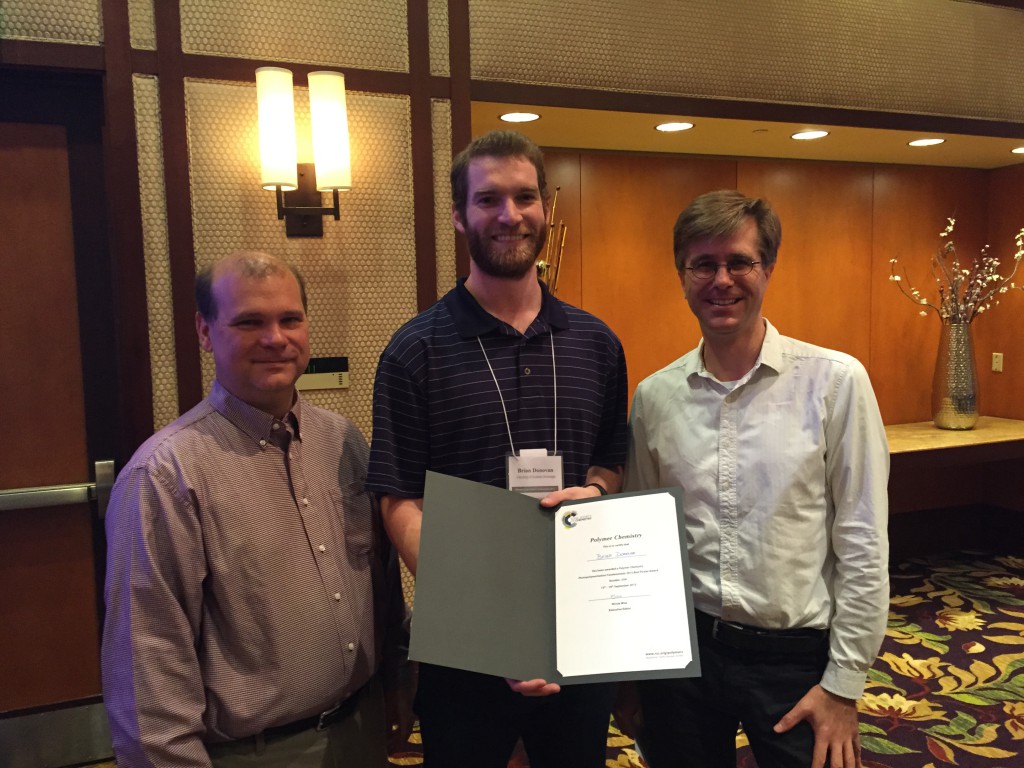 Emily Pentzer is an Associate Editor for Polymer Chemistry and an Assistant Professor of Chemistry at Case Western Reserve University, USA. Her research addresses application-based materials problems in the areas of energy harvesting, management, and storage. She uses synthetic chemistry to tailor molecular design and control self-assembly for the preparation and study of novel conductive materials with controlled domain sizes and interfaces.
Emily Pentzer is an Associate Editor for Polymer Chemistry and an Assistant Professor of Chemistry at Case Western Reserve University, USA. Her research addresses application-based materials problems in the areas of energy harvesting, management, and storage. She uses synthetic chemistry to tailor molecular design and control self-assembly for the preparation and study of novel conductive materials with controlled domain sizes and interfaces.
You can find all Editorial Board’s Top Picks papers in our web collection.
Focus on PAH building blocks for electronically active and porous polymers (Associate Editor: Prof Emily Pentzer Case Western Reserve University, USA)
Polyaromatic hydrocarbons (PAHs) are attractive building blocks for electronically active and porous organic polymers. For these applications, the preparation and isolation of appropriate polymeric structures is needed to provide the desired properties. PAHs are typically incorporated into conjugated polymers by transition metal-catalyzed cross-coupling reactions, and their solubility and solution processability is ensured by substitution with alkyl groups; recent interest has focused on accessing reduced band gap structures. Alternatively, for the preparation of porous organic polymers, the tendency of PAHs to aggregate through p-p interactions must be overcome, and alkyl groups are disadvantageous for gas adsorption/storage. Recent advances in the design and synthesis of PAH-containing polymers have helped expand the usefulness of these heteroatom-free systems.
1. Anthanthrene as a large PAH building block for the synthesis of conjugated polymers
Antoine Lafleur-Lambert, Jean-Benoît Giguère and Jean-Francois Morin
Polym. Chem., 2015, 6, 4859-4863
Aromatic anthanthrene is readily available from the common dye vat orange 3 and can be used to prepare PAH-containing polymers. Morin and coworkers report the preparation of a series of anthanthrene-based conjugated polymers. The anthanthrene unit has branched alkyl substituents to control solubility and was copolymerized with electron rich and electron poor aryl comonomers. The absorption spectra of these polymers range from 450 to 850 nm, depending on the constituent materials. The series of novel polymers all showed similar LUMO levels, and variation of the HOMO levels show no trends based on the comonomer identity. These results indicate that both the HOMO and the LUMO orbitals are located on the anthanthrene units, and are not heavily influenced by the comonomer identity.
2. Dicyclopenta[cd,jk]pyrene based acceptors in conjugated polymers
Sambasiva R. Bheemireddy and Kyle N. Plunkett
Polym. Chem., 2016, Advance Article
In this study, Plunkett and Bheemireddy report the use of the PAH dicyclopentapyrene, as an acceptor unit in conjugated polymers. This alkylated monomer was copolymerized with various electron donor comonomers including thiophene, bithiophene, and diethynyl benzene. In the thin film, these polymers show broad absorption profiles, from ~320-720 nm, corresponding to band gaps of ~1.7 eV. The identity of the comonomer with the PAH had little influence on the HOMO and LUMO levels, inconsistent with traditional donor-acceptor theory for reduced bandgap materials. In fact, DFT calculations show the LUMO orbital distribution across the series is essentially unchanged and mostly located on the PAH unit (as expected), but surprisingly, the HOMO orbitals are also localized to the PAH unit for the thiophene and bithiophene polymers.
3. Di(naphthalen-2-yl)-1,2-diphenylethene-based conjugated polymers: aggregation-enhanced emission and explosive detection
Mengxia Gao, Yue Wu, Bin Chen, Bairong He, Han Nie, Tingyan Li, Fupeng Wu, Wenjun Zhou, Jian Zhou and Zujin Zhao
Polym. Chem., 2015, 6, 7641-7645
Di(naphthalene-2-yl)-1,2-diphenylethene is used as a building block by Zhao and coworkers to prepare fluorescent conjugated polymers which show aggregation induced emission. Addition of the poor solvent water to these polymers in THF causes them to aggregate and essentially turns on the fluorescence of the materials by preventing non-radiative excited state decay. DFT calculations show the HOMO and LUMO orbitals are significantly distributed over both comonomers, as well as the pendant naphthyl groups, indicating good intramolecular orbital overlap. These materials further show potential to detect explosives under aqueous conditions, as the fluorescence is quenched in the presence of picric acid.
4. Facile approach for preparing porous organic polymers through Bergman cyclization
Xian-Mei Zhang, Xuesong Ding, Aiguo Hu and Bao-Hang Han
Polym. Chem., 2015, 6, 4734-4741
The Bergman cyclization reaction was used to prepare microporous polymers from a triphenylene-based monomer that contains three ene-diyne moieties. This catalyst-free and thermally induced intramolecular cyclization produces three 1,4-benzene biradical per monomer that undergo intermolecular coupling to yield the porous polymer. Although the monomers themselves are planar, they link together in a non-planar fashion to give a porous, high surface area material. Han and coworkers then demonstrate that the novel micorporous polymers show high adsorption capacity for both hydrogen and carbon dioxide.












